Properties
| Storage Buffer | PBS pH7.4, 50% glycerol, 0.09% sodium azide *Storage buffer may change when conjugated |
| Storage Temperature | -20ºC, Conjugated antibodies should be stored according to the product label |
| Shipping Temperature | Blue Ice or 4ºC |
| Purification | Protein A purified |
| Clonality | Polyclonal |
| Specificity | Detects ~32kDa. |
| Cite This Product | HO-1 Antibody (StressMarq Biosciences | Victoria, BC CANADA, Catalog# SPC-112, RRID: AB_2248402) |
| Certificate of Analysis | 1 µg/ml of SPC-112 was sufficient for detection of HO-1 in 10 µg of heat shocked HeLa cell lysate by colorimetric immunoblot analysis using Goat anti-rabbit IgG:HRP as the secondary antibody. |
Biological Description
| Alternative Names | HSP32, HMOX1, Heme oxygenase 1, HO, HO1, 32 kD, bK286B10, D8Wsu38e, heat shock protein 32 kD, heat shock protein 32kD, Heat shock protein, Heme oxygenase (decycling) 1, Hemox, HMOX 1, Hmox, Hmox1, HMOX1_HUMAN, HO 1, HO-1, Heme Oxygenase-1, Haem Oxygenase-1, Heat Shock Protein 32, Heme Oxygenase (Decyclizing), EC 1.14.14.18 |
| Research Areas | Alzheimer's Disease, Atherosclerosis, Blood, Cancer, Cancer Metabolism, Cardiovascular System, Cell Signaling, Endothelium, Epigenetics and Nuclear Signaling, Hypoxia, Inflammatory Mediators, Metabolism, Metabolism processes, Neurodegeneration, Neuroscience, NFkB Pathway, Nuclear Signaling Pathways, Oxidative Stress, Platelets, Response to Hypoxia, Vascular Inflammation, Vasculature |
| Cellular Localization | Endoplasmic Reticulum, Microsome |
| Accession Number | NP_002124.1 |
| Gene ID | 3162 |
| Swiss Prot | P09601 |
| Scientific Background |
Heme oxygenase-1 (HO-1), also known as heat shock protein 32, is an inducible enzyme that catalyzes the degradation of heme into biliverdin, free iron, and carbon monoxide—each with distinct biological functions. Biliverdin is rapidly converted to bilirubin, a potent antioxidant, while carbon monoxide acts as a signaling molecule with anti-inflammatory and vasodilatory properties. Free iron, although potentially toxic, is sequestered by ferritin to limit oxidative damage. HO-1 is strongly upregulated in response to oxidative stress, inflammation, and neurotoxic insults, positioning it as a key cytoprotective factor in the central nervous system. Its expression is elevated in various neurodegenerative conditions, including Alzheimer’s disease, Parkinson’s disease, and multiple sclerosis, where it helps mitigate neuronal injury by reducing reactive oxygen species and modulating immune responses. Unlike its constitutive isoform HO-2, HO-1 is dynamically regulated and serves as a frontline defense against cellular stress. Deficiency in HO-1 has been linked to increased neuroinflammation, impaired stress tolerance, and heightened vulnerability to neurodegenerative pathology. Given its dual role in detoxifying free heme and generating neuroprotective metabolites, HO-1 is a promising therapeutic target for modulating oxidative stress and inflammation in neurodegenerative disease research. |
| References |
1. Froh M. et al. (2007) World J. Gastroentereol 13(25): 3478-86. 2. Elbirt K.K. and Bonkovsky H.L. (1999) Proc Assoc Am Physicians 111(5): 348-47. 3. Maines M.D., Trakshel G.M., and Kutty R.K. (1986) J Biol Chem 261: 411–419. 4. Brydun A., et al. (2007) Hypertens Res 30(4): 341-8. 5. Poss K.D. and Tonegawa S. (1997). Proc Natl Acad Sci U S A. 94: 10925–10930. 6. Yet S.F., et al. (2003) FASEB J. 17: 1759–1761. 7. Yachie A., et al. (1999) J Clin Invest. 103: 129–135. |
Product Images

Immunocytochemistry/Immunofluorescence analysis using Rabbit Anti-HO-1 Polyclonal Antibody (SPC-112). Tissue: Heat Shocked Cervical cancer cell line (HeLa). Species: Human. Fixation: 2% Formaldehyde for 20 min at RT. Primary Antibody: Rabbit Anti-HO-1 Polyclonal Antibody (SPC-112) at 1:100 for 12 hours at 4°C. Secondary Antibody: FITC Goat Anti-Rabbit (green) at 1:200 for 2 hours at RT. Counterstain: DAPI (blue) nuclear stain at 1:40000 for 2 hours at RT. Localization: Endoplasmic reticulum membrane. Cytoplasm. Magnification: 100x. Heat Shocked at 42°C for 1h.
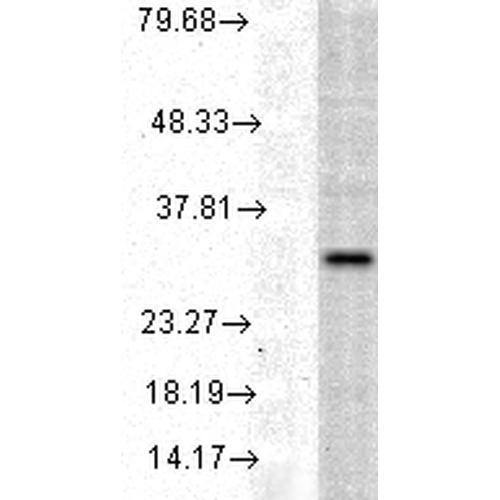
Western blot analysis of Human Cell line lysates showing detection of HO-1 protein using Rabbit Anti-HO-1 Polyclonal Antibody (SPC-112). Load: 15 µgprotein. Block: 1.5% BSA. Primary Antibody: Rabbit Anti-HO-1 Polyclonal Antibody (SPC-112) at 1:1000 for 2 hours at RT. Secondary Antibody: Donkey Anti-Rabbit IgG: HRP for 1 hour at RT.

Immunocytochemistry/Immunofluorescence analysis using Rabbit Anti-HO-1 Polyclonal Antibody (SPC-112). Tissue: Heat Shocked Cervical cancer cell line (HeLa). Species: Human. Fixation: 2% Formaldehyde for 20 min at RT. Primary Antibody: Rabbit Anti-HO-1 Polyclonal Antibody (SPC-112) at 1:100 for 12 hours at 4°C. Secondary Antibody: APC Goat Anti-Rabbit (red) at 1:200 for 2 hours at RT. Counterstain: DAPI (blue) nuclear stain at 1:40000 for 2 hours at RT. Localization: Endoplasmic reticulum membrane. Cytoplasm. Magnification: 20x. (A) DAPI (blue) nuclear stain. (B) Anti-HO-1 Antibody. (C) Composite. Heat Shocked at 42°C for 1h.

Immunocytochemistry/Immunofluorescence analysis using Rabbit Anti-HO-1 Polyclonal Antibody (SPC-112). Tissue: Cervical cancer cell line (HeLa). Species: Human. Fixation: 2% Formaldehyde for 20 min at RT. Primary Antibody: Rabbit Anti-HO-1 Polyclonal Antibody (SPC-112) at 1:120 for 12 hours at 4°C. Secondary Antibody: FITC Goat Anti-Rabbit (green) at 1:200 for 2 hours at RT. Counterstain: DAPI (blue) nuclear stain at 1:40000 for 2 hours at RT. Localization: Endoplasmic reticulum membrane. Cytoplasm. Magnification: 100x. (A) DAPI (blue) nuclear stain. (B) Anti-HO-1 Antibody. (C) Composite.

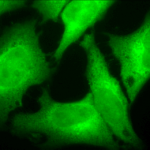
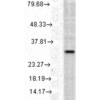
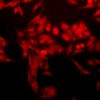
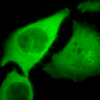
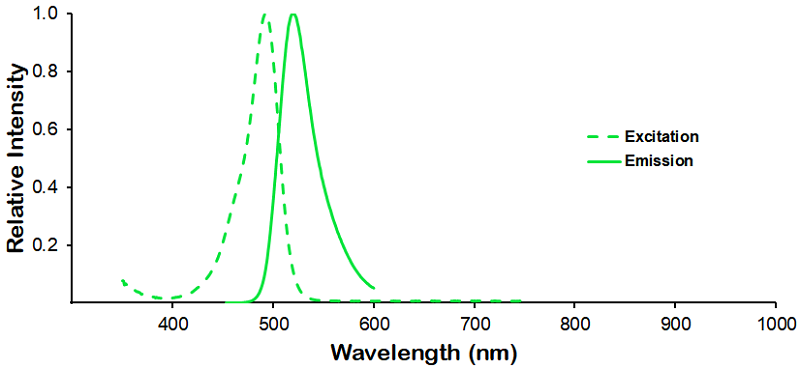
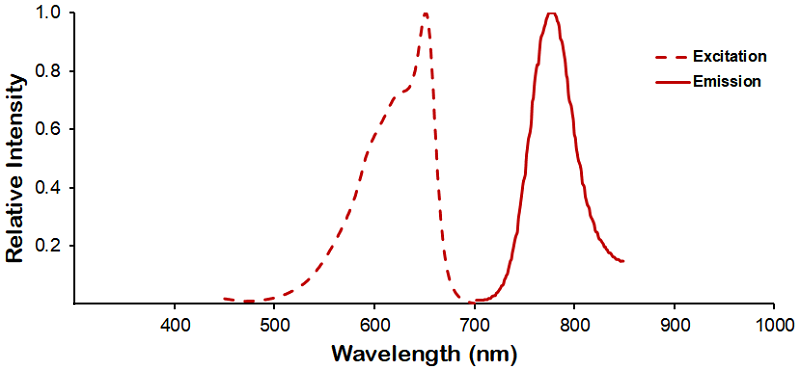
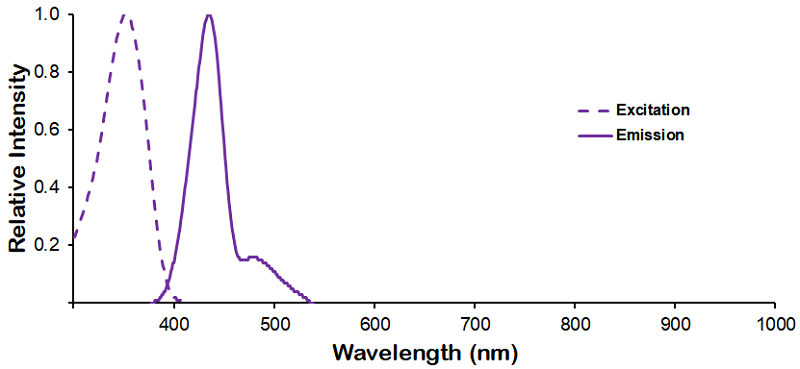
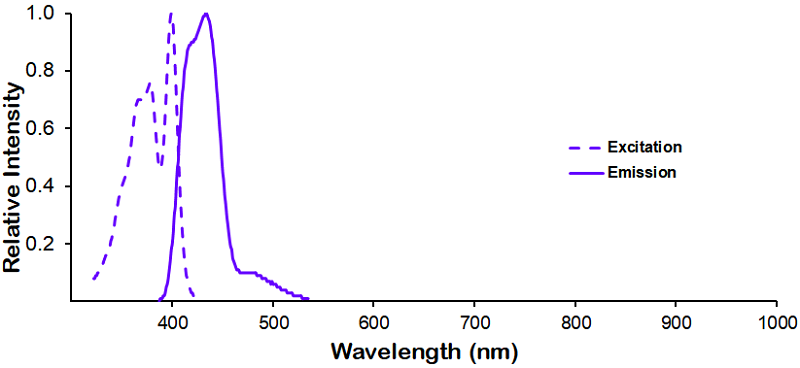
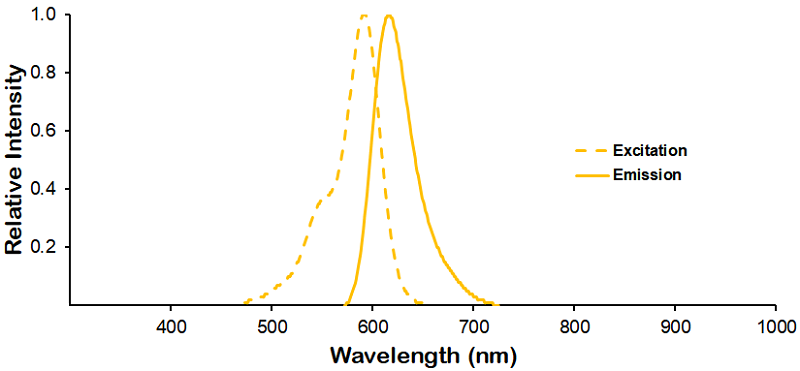

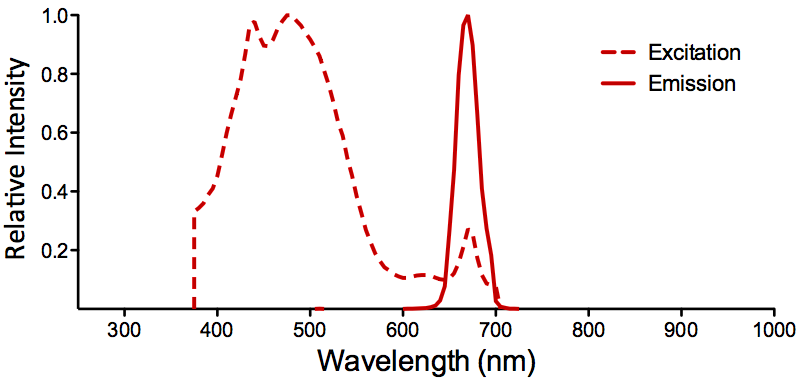
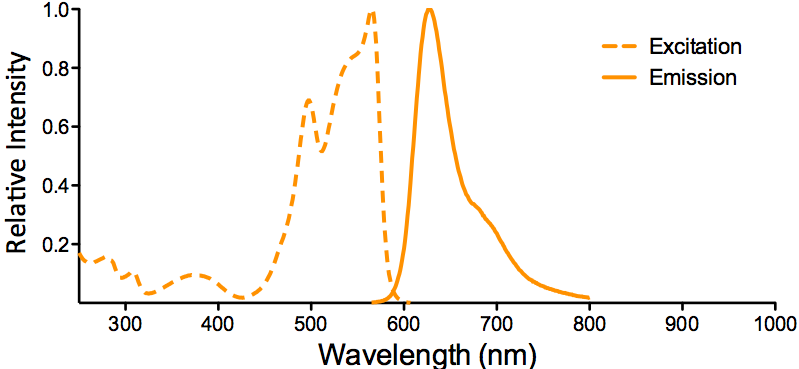
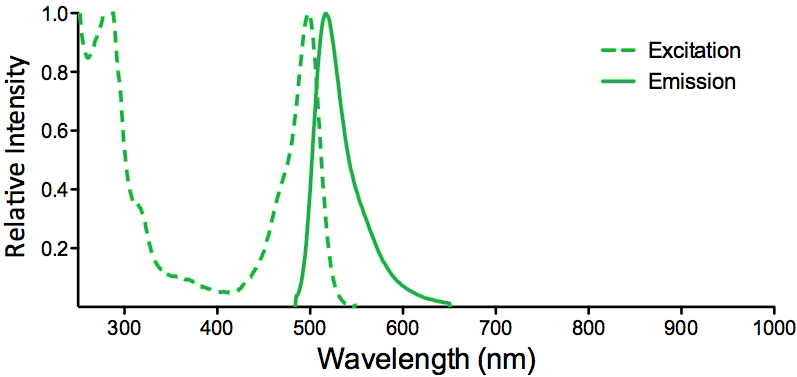
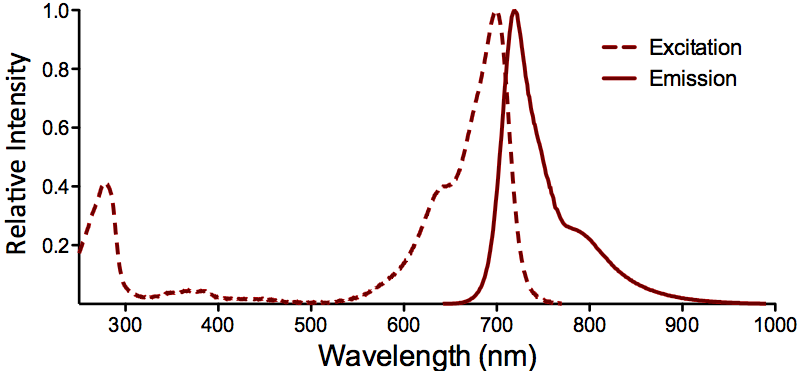
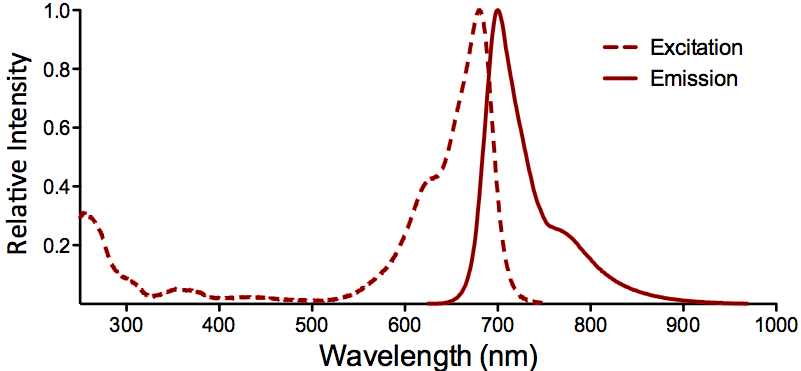

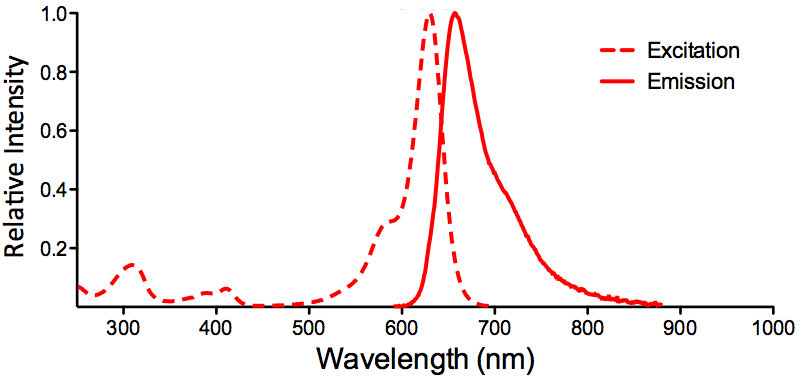
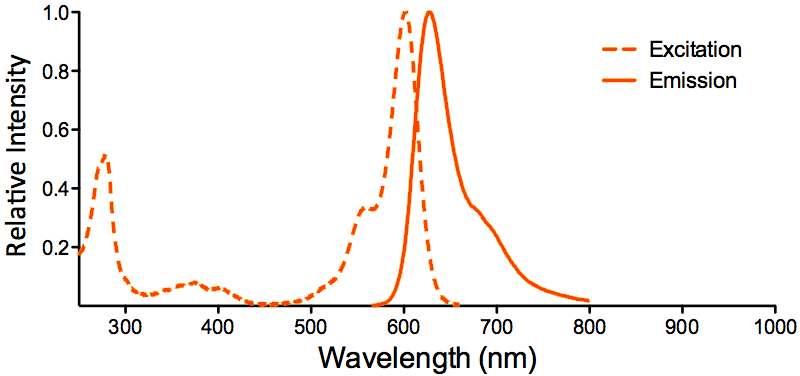

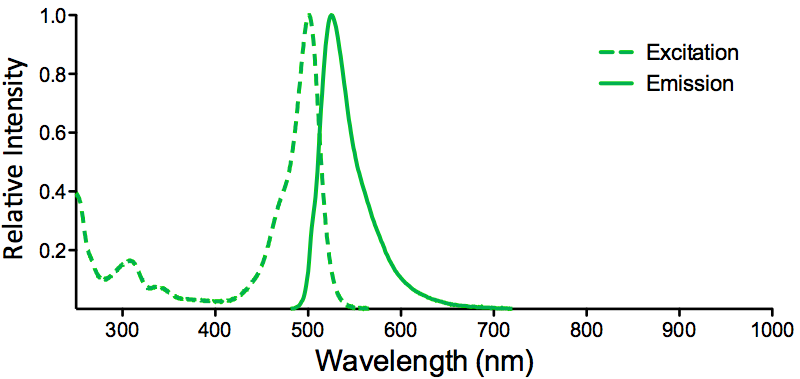
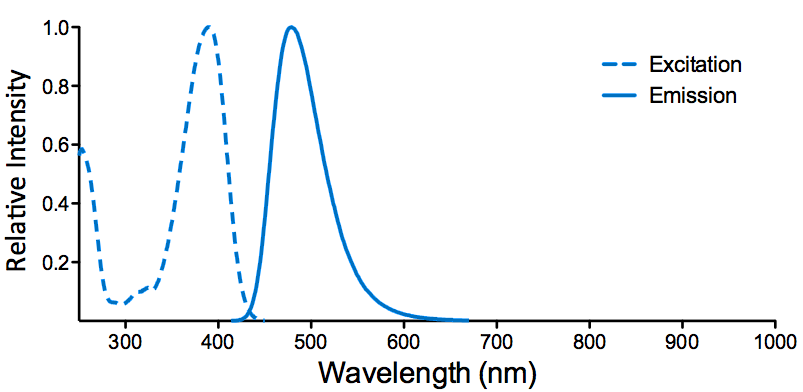
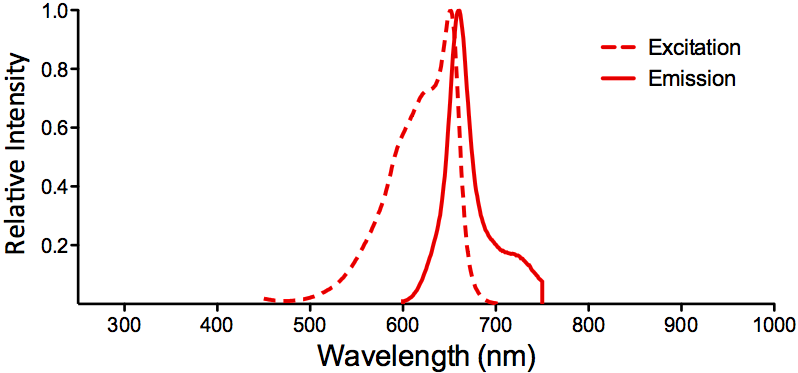
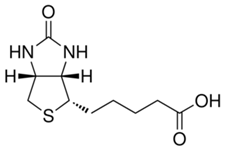
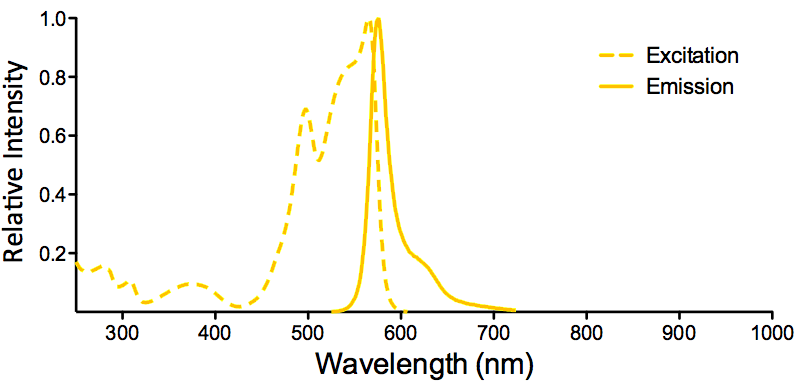
Reviews
There are no reviews yet.